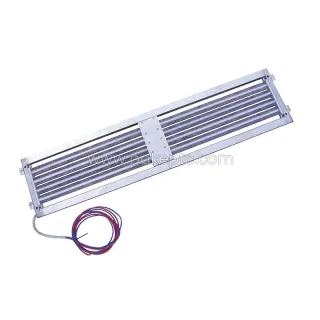How to Differentiate MCH Heater and PTC Heater
When it comes to electric heaters, there are various types available in the market to cater to different heating requirements. Two popular types of electric heaters are MCH (Metal Ceramic Heater) and PTC (Positive Temperature Coefficient) heaters. While both are used for heating applications, they have different characteristics and are suitable for different uses. In this article, we will explore the differences between MCH heaters and PTC heaters to help you understand which one may be the right choice for your specific needs.
MCH heaters are made of a combination of metal and ceramic materials. They consist of a small ceramic block with a heating element embedded in it. The ceramic block is coated with a thin layer of metal, which acts as a conductor for the electrical current to pass through and generate heat. MCH heaters are known for their fast response time, high power density, and long lifespan. They are commonly used in applications such as hair dryers, soldering irons, and automotive seat heaters.
On the other hand, PTC heaters are made of ceramic materials with a special property called positive temperature coefficient. This means that the resistance of the ceramic material increases with an increase in temperature. PTC heaters are self-regulating, which means that they can regulate their own temperature without the need for an external thermostat or controller. As the temperature of the PTC heater increases, its resistance also increases, which in turn reduces the power output, making them inherently safe to use. PTC heaters are commonly used in applications such as air heaters, room heaters, and electric vehicles.
One of the key differences between MCH heaters and PTC heaters is their temperature control mechanism. MCH heaters require an external thermostat or controller to regulate their temperature, whereas PTC heaters have self-regulating properties that eliminate the need for external temperature control devices. This makes PTC heaters more energy-efficient and safer to use, as they automatically adjust their power output based on the temperature of the environment.
Another difference between MCH heaters and PTC heaters is their power output characteristics. MCH heaters typically have a higher power density, which means they can generate a higher amount of heat in a smaller area. This makes them suitable for applications that require high power density, such as hair dryers or soldering irons. On the other hand, PTC heaters have a lower power density, which makes them suitable for applications that require a more distributed and uniform heat output, such as room heaters or air heaters.
In terms of lifespan, MCH heaters are known for their long lifespan, thanks to their durable metal and ceramic construction. They can withstand high temperatures and frequent thermal cycling without losing their performance. On the other hand, PTC heaters may have a shorter lifespan due to the self-regulating property of the ceramic material, which can degrade over time with repeated heating and cooling cycles.
In conclusion, both MCH heaters and PTC heaters have their own unique characteristics and are suitable for different applications. MCH heaters are known for their high power density, fast response time, and long lifespan, making them ideal for applications that require high heat output in a small area. PTC heaters, on the other hand, are self-regulating, energy-efficient, and safe to use without the need for external temperature control devices, making them ideal for applications that require distributed and uniform heat output. If you are looking for PTC heaters manufacturer, click here to find reliable suppliers that offer a wide range of PTC heaters for various heating applications.



评论
发表评论